‘Comfort Woman’ Memorial Statues, A Thorn In Japan’s Side, Now Sit On Korean Buses 丨日本政府的肉中刺—“慰安妇”纪念雕像被放置在韩国公共汽车中
大家好!我是霸姐。感谢如此可爱的你点开这篇推送。
今天的话题非常的触动霸姐。抗日战争已经结束72年了,但并不是所有的伤痛都能被时间抚平。从今年8月上映的电影《二十二》到今天我们要关注的韩国慰安妇纪念雕塑 “Peace Statue”,我们发现,中韩人民都在用自己的办法告诉世界,我们敢于面对过去,能够承受伤痛,但绝不接受无耻抵赖!
以下是英语简单霸进行翻译后的内容,旨在让大家学习英语的同时获取相关咨询。
ROBERT SIEGEL, HOST:
One main goal of President Trump’s trip to Asia is to rally America’s allies there to help put pressure on North Korea. But two of those allies have a lot to work out between themselves—South Korea and Japan.Their tensions date back to Japan’s occupation of Korea in the first part of the 20th century.
主持人Robert Siegel:这次特朗普总统的亚洲之行的其中一个很重要的目的就是联合美国的盟友一起向北朝鲜施加压力。但是,这些盟国中的其中两家:日本和南韩,似乎有很多他们自己之间的问题要处理。日韩两国的紧张关系要追溯到20世纪初日本占领韩国的时候。
ELISE HU, HOST:
And I’ve seen those tensions play out in South Korea, where I’m usually based. And this is the story of one of them over a bronze statue of a young girl. She sits in a chair, staring straight ahead with a look of determination. She has short, cropped hair and wears a handbook, a traditional Korean dress. She’s bare foot. Next to her is an empty chair. She’s known as the peace statue.
主持人 Elise Hu:
我常驻在南韩,我也的确感受到这种紧张关系。这中紧张的关系,最近和一个年轻女孩儿的铜像有关。她坐在一把椅子上,专注而坚定的看着前方。她不高,短发,穿着传统的韩国服饰。她没有穿鞋。在她旁边是一张空椅子。她就是被称为“和平纪念像”的雕像。
AHN JEOM-SUN: (Speaking Korean). 这里是一段对当地一位女士的采访,后被翻译成英文如下。
HU: The girl memorializes women like Ahn Jeom-sun. She’s now 89 and says she’s visited the statue often. It symbolizes the youth she lost at age 13 when the Japanese Imperial Army abducted her from her village.
Hu:这个女孩的雕像是为了纪念像 Ahn Jeom-sun 一样的女性。AhnJeom-sun现在已经89岁了,她说她经常来此参观雕像。因为这雕像象征着她在13岁那年,被日本侵略军从她的村庄掳走前的美好年华。
AHN: (Through interpreter) What I remember is that I was forcibly taken out of Korea and taken to China.
AHN (翻译):我只记得我当时被强行从韩国掳去了中国。
HU: The United Nations estimates 200,000 girls and women—mostly Koreans—were seized from villages to join Japan’s military sexual slavery program before and during the Second World War.
Hu: 联合国估计,二战期间有至少20万女孩和妇女,其中很大一部分韩国人,被日军强行从家乡掳走,被迫成为日军的性奴隶。
AHN: (Through interpreter) What can I say? They did all the things they wanted to do according to their desires.
AHN (翻译):我只能说,当时他们(日军)为了满足自己的欲望,什么都做的出来。
HU: They came to be known as comfort women. They served at temporary brothels near the frontlines, often tents or wooden shacks surrounded by barbed wire. And they were forced to have sex with as many as 70 Japanese soldiers perday.
HU:这些受害的妇女就是“慰安妇”。她们当时被倒刺网困在靠近前线的,用帐篷和棚屋搭建的临时妓院中。她们每天被迫向最多70名日本军人提供性服务。
AHN: (Through interpreter) If we didn’t obey what they wanted us to do, they would hit us. What more could we possibly do besides just wait until Korea was liberated?
AHN (翻译):如果我们不服从的话,他们就打我们。我们当时除了期盼韩国早日解放之外毫无反抗之力。
HU: The practice ended in 1945 with the end of the war. Ahn is one of a few dozen comfort women still alive. The pain of what happened to these women is felt so deeply by Koreans that Korean populations around the world have put up replicas of the Peace Statue in places including New Jersey, California, Australia and Germany. Here in Korea, they’re in about 50 different parks and public spaces.
HU:这样的折磨直到1945年二战结束时才得以停止。AHN 是为数不多的活着回来的慰安妇之一。发生在这些女性身上的惨剧一直深深的刺痛着所有韩国民众,所以世界各地的韩国人联合起来,在世界各地塑起了很多座“和平雕像”的复制品,其中包括,新泽西州,加利佛尼亚州,澳洲和德国。在韩国,有近50处公园和公共区域竖立着“和平雕像”。
In the winter, Koreans will come and dress these bronze statues to keep them warm. So this one is wearing a gold cap, a matching scarf and a little stuffed bear tied into the scarf.
在冬天,韩国民众们会来为这些铜像穿上衣服来保暖。所以这尊雕像戴着一顶金色的小帽子,围配套的围巾,围巾上还有一个小熊装饰。
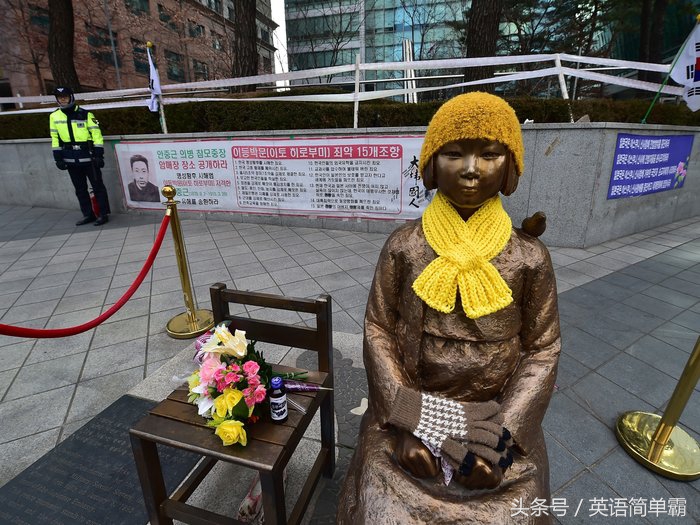
Jung Yeon-Je/AFP/Getty. Copyright ? 2017 NPR.
Japan wants these statues to come down. Some in the country’s ruling party have questioned the Imperial government’s involvement in the sex slave program, or they contend the women volunteered forit. The current Japanese government declined our request for an interview.
日本方面希望撤销这些雕像。一些政府执政党派人士不认为当时帝国政府参与实施了这样的性奴隶项目,他们认为这些妇女是自愿的。现在的日本政府拒绝了本台就此事提出的采访请求。
A few years ago, Japan and South Korea struck a deal. It required Japan to compensate the victims and issue a statement of regret. In return, Korea would remove the first of these bronze girls which went up in 2011 in front of the Japanese Embassy in Seoul. As far as the Japanese government was concerned, the issue was settled, but it wasn’t for Korean citizens and activists. They keep putting statues up. A new one that went up in January angered the Japanese government so much that it removed its ambassador to South Korea for a few months.
几年以前,日韩双方政府曾经达成了一个协议。协议要求日本政府向这些受害者进行赔偿,并发表正式道歉。那么作为交换,韩国方面会撤下2011年时被竖立在首尔的日本驻韩国大使馆门前的第一座“和平雕像”。如此,日本政府认为问题已经解决了。但韩国民众和民间组织并不这么认为。他们依然在各处竖立这样的纪念雕像。今年一月份韩国民众竖立的一座新的雕像激怒了日本政府,使得日本政府把日本驻韩国大使撤走了数月。
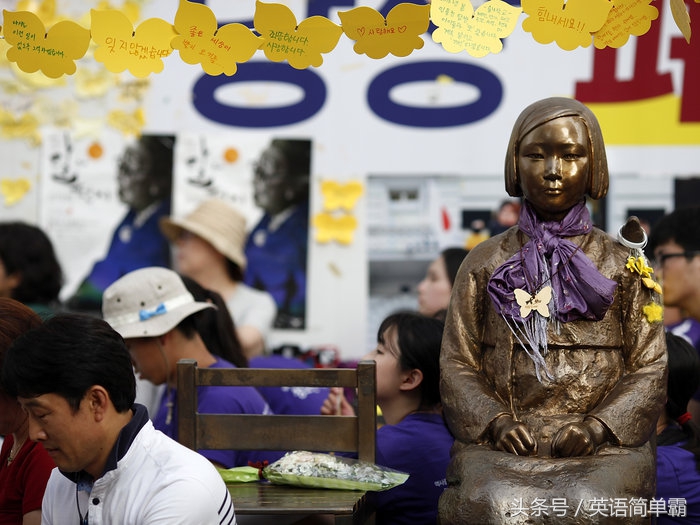
Woohae Cho/Getty. Copyright ? 2017 NPR.
UNIDENTIFIED WOMAN: (Speaking Korean). 一位不愿意透露身份的韩国女士:(韩语被翻译成英文)
HU: The latest statue is showing up on city buses. There she is. The bus monument is of the same short-haired, seated girl with her hands clenched in her lap.
HU: 一座最新的雕像被放置在了城市公车中。图中就是她的样子。
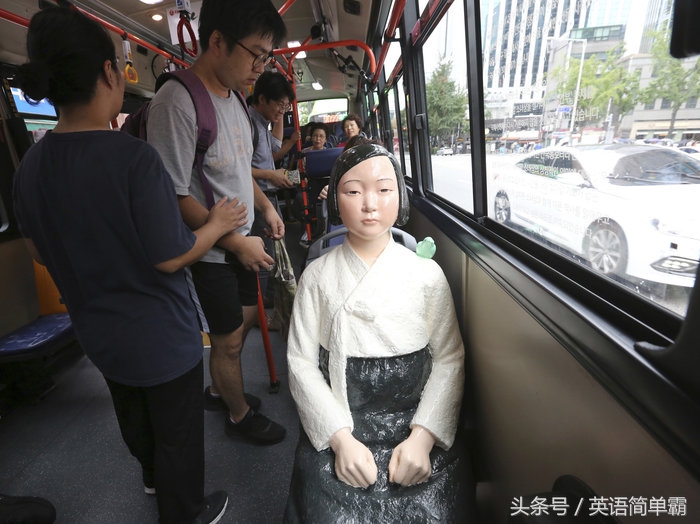
Ahn Young-joon/AP. Copyright ? 2017 NPR.
But instead of a plain bronze, she’s painted—black hair, light skin and a black-and-white dress. So the statue is seated in the front of the bus behind the driver. It makes for some surprises as riders like Yoon Sung-lim get on.
这座在公共汽车上的纪念像是和“和平雕像”中的女孩儿一样的短发,她坐在那里,双手紧握放在腿上。但不同于“和平雕像”中使用的纯铜,她是有颜色的-黑头发,浅色的皮肤,黑白间色的裙子。雕像坐在前排紧靠司机之后的座位上。这让像 Yoon Sung-lim 一样的乘客们多少有些惊讶。
YOON SUNG-LIM: (Through interpreter) I wasn’t scared. I wasn’t shocked. But I was like, oh, what is this? I saw it on TV a little bit acouple of times, but I’m seeing it for the first time in real life.
Yoon Sung-lim:(翻译)我当时吓了一跳,很惊讶。我一时之间不知道这是什么。我曾经在电视上看到过几次,但这是我第一次亲眼所见。
HU: For the activists behind these statues, the idea is to keep the issue at the top of mind now that the living victims are getting older and dying. Kim Hyang-mi led the effort to get the statues on the city of Suwon’s buses.
HU:这些雕像背后的活动家们旨在提醒人们这些幸存的受害者正在老去,逝去。KimHyang-mi 领导了将这座雕像置于水原市公交车的活动。
KIM HYANG-MI: (Through interpreter) By having these statues, we’ll have high school students and younger generations be curious about what the meaning is behind these statues, ask their older generations or ask their parents or friends what this means and actually receive a proper explanation and know what happened.
Kim Hyang-mi:(翻译)通过塑立这些雕像,我们想让现在的高中生和年轻一代好奇这些雕像背后的意义,进而去询问他们的长辈或者朋友,然后他们会知道当时发生了什么。
HU: In Seoul, the statue rolled around on bus number 151, the one that stops right in front of the Japanese Embassy. The girl is visible everytime bus doors open.
HU:在首尔,雕像轮流搭乘151号公交车,这趟公车有一站是在日本大使馆正门前,每次车门打开,雕像女孩都会被清清楚楚的看到。
ALEXIS DUDDEN: This is a victim among us. And you’re sort of confronted when you step aboard the bus. You don’t know which it’s going to be. But here she is. And it could be any of us.
ALEXIS DUDDEN:雕像代表我们当中的受害者。每次当你搭乘公车的时候,你都必须要面对她。你不知道下一个受害的会是谁。但她在这里。她提醒我们下一个受害者可能就是我们当中的任何一个。
HU: Alexis Dudden is a professor of Japanese history at the University of Connecticut. She points out that while the U.S. and other countries debate whether to take down monuments to the participants or perpetrators of war, Japan is doing something different.
HU:Alexis Dudden 是康涅狄格州大学研究日本历史的教授。她指出,当美国和其他国家讨论要不要拆除战犯纪念馆时,日本正在做完全不同的事情。
DUDDEN: In the best of my knowledge, it remains only Japan that is seeking to remove a statue of a victim. Politically speaking, there’s just no winning in that.
DUDDEN:据我所知,现在只有日本仍然在寻求各种拆除受害者纪念雕像的办法。从政治的角度上说,这并不明智。
HU: Ahn Jeom-sun, the former sex slave, says after what happened to her during the war, she couldn’t even think about getting married or having children. She didn’t start speaking out about her story until the 1990s. She says she doesn’t want compensation from Japan.
HU:Ahn Jeom-sun, 作为受害者,她说自那时候起,她就再不敢想结婚或者有自己的孩子。她直到1990年才开始说出自己的故事。她说她并不是想要日本的赔偿金。
AHN: (Through interpreter) At this point, we don’t really care about the money. We don’t really care about politics. We just want a proper apology from them directly to us. We want them to think about us, the actual women that were involved.
AHN:(翻译)在这点上来说,我根本不在乎钱。我们也不再乎政治。我们就是想要一个正式的,真诚的,合理的道歉。我们希望他们想到我们,这些被卷进残酷折磨中的真实的女人。
HU: And she wants the statues to stay.
HU:并且她希望雕塑能被保留下来。
说明:译文部分并非完全按照英文逐字对照翻译,而是遵循信、达、雅的原则,在准确表达意思的基础上依照汉语的语言习惯组织内容。
Keywords丨关键词
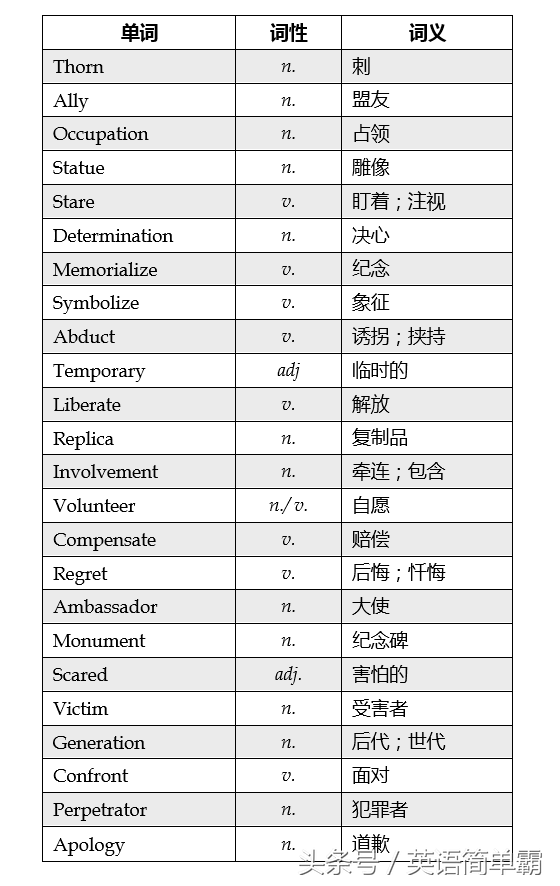
*以上内容英文部分、图片及音频均引用自 www.NPR.org. Copyright ? 2017 NPR. All rights reserved.
原文链接:https://www.npr.org/sections/parallels/2017/11/13/563838610/comfort-woman-memorial-statues-a-thorn-in-japans-side-now-sit-on-korean-buses
*以上内容中文部分为【英语简单霸】原创。本文仅用于个人学习用途,禁止任何商业目的的转载及修改。
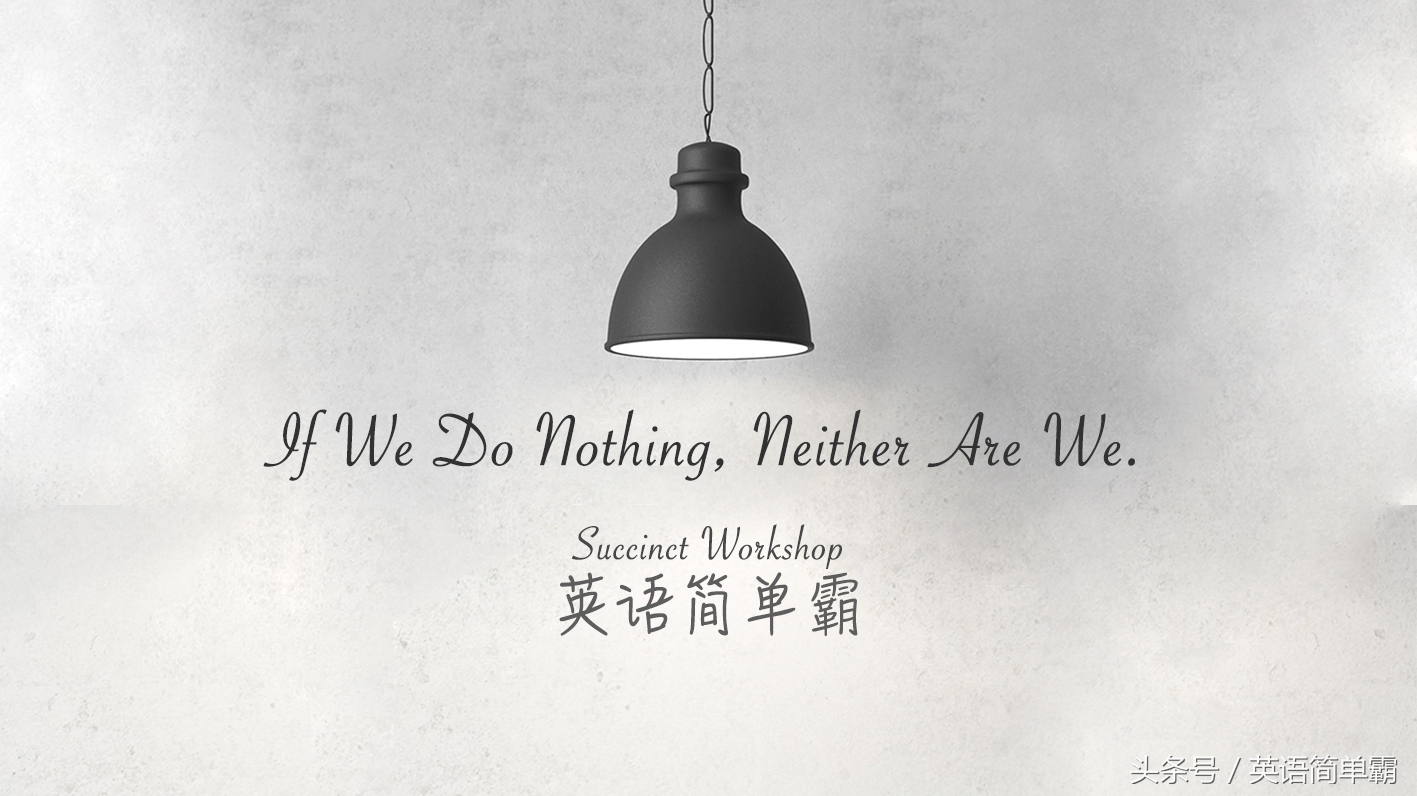
本文来自陌颜投稿,不代表胡巴网立场,如若转载,请注明出处:https://www.hu85.com/249846.html
版权声明:本文内容由互联网用户自发贡献,该文观点仅代表作者本人。本站仅提供信息存储空间服务,不拥有所有权,不承担相关法律责任。如发现本站有涉嫌抄袭侵权/违法违规的内容, 请发送邮件至 xxxxx@qq.com 举报,一经查实,本站将立刻删除。
